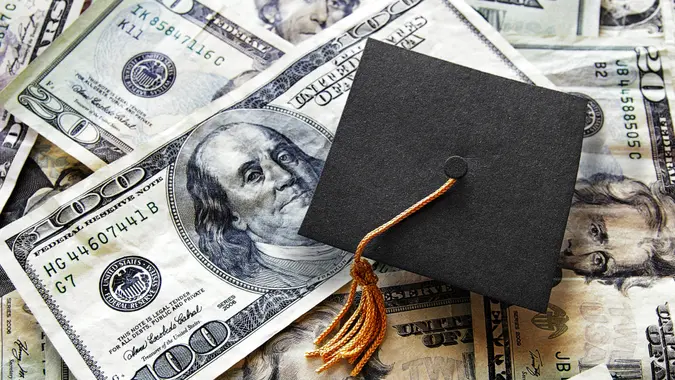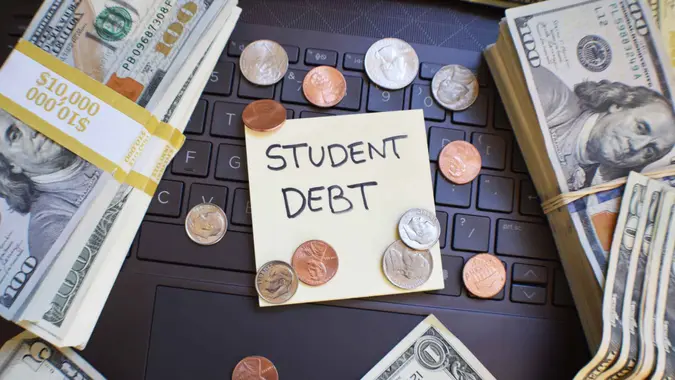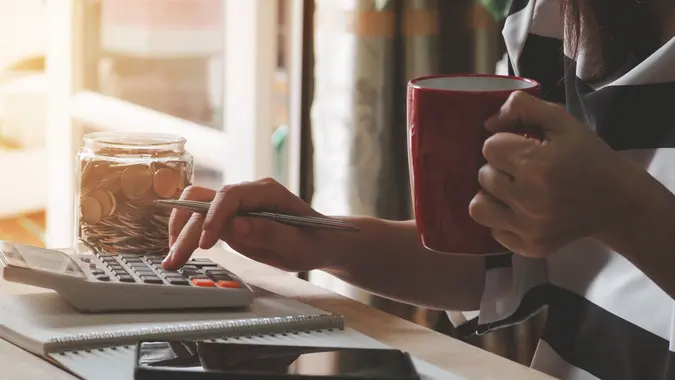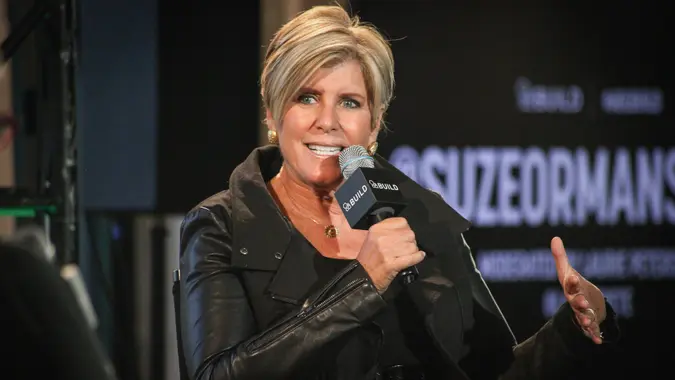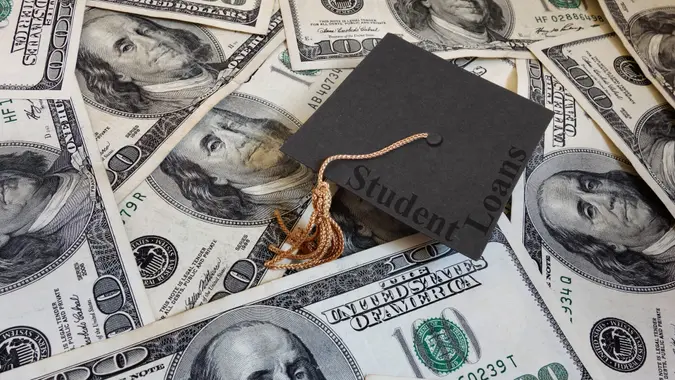Your Student Loan Payment Could Drop Significantly in July 2024 — Here’s Why

Commitment to Our Readers
GOBankingRates' editorial team is committed to bringing you unbiased reviews and information. We use data-driven methodologies to evaluate financial products and services - our reviews and ratings are not influenced by advertisers. You can read more about our editorial guidelines and our products and services review methodology.

20 Years
Helping You Live Richer

Reviewed
by Experts

Trusted by
Millions of Readers
Student loan borrowers have been put through an emotional rollercoaster ride over the past four years. In early 2020, Congress passed the Coronavirus Aid, Relief, and Economic Security Act (CARES Act) in early 2020, suspending student loan payments and freezing interest rates.
However, that was just the beginning of a period of promises, lawsuits and dashed hopes.
Starting in July, many undergraduate student loan borrowers may finally feel some financial relief when their monthly payment obligations get slashed in half, if the Biden Administration can successfully appeal further federal court resistance.
Back in Aug. 2023, the White House announced its plans to provide “the most affordable repayment plan ever created” and repair the then-current student loan system. The result was the Saving on a Valuable Education (SAVE) plan, which has been lauded by the left and attacked by the right since it was launched last fall.
How the SAVE Plan Might Work, Despite Opposition
More than half of those enrolled in SAVE qualify for $0 payments, but for those who still owe, SAVE calculates monthly payments based on a borrower’s discretionary income, which is their income above 225% of the federal poverty line. According to CBNC Make It, repayment for individuals with undergraduate loans only was to decrease to 5% of discretionary income in July, which could result in many borrowers’ monthly costs being slashed in half.
Now, implementation of parts of SAVE’s components — including the halving undergraduate loan payments that were initially set to take effect on July 1 — have been stopped by two federal court judges in Kansas and Missouri. Payment reductions have been postponed pending appeals by the White House and Department of Justice.
Posting via X on June 25, White House press secretary Karine Jean-Pierre wrote, “The Department of Justice will be appealing both decisions to block key provisions of our SAVE Plan. We will never stop fighting to lower monthly payments and help borrowers get out from under the burden of student debt — no matter how many times Republican elected officials try to stop us.”
For almost 8 million borrowers registered in SAVE, the court decisions have borrowers scrambling for details — and represent yet another blow to those seeking financial forgiveness, and to those who had budgeted based on reduced payments starting in July.
Biden’s History of Student Loan Promises
Following Joe Biden’s conditional promise to cancel $10,000 per borrower (and $20,000 for Pell Grant recipients), the Supreme Court struck down Biden’s plan in June 2023 after lawsuits filed by six states with Republican attorneys general and two individuals with student loans. The ruling deemed the Biden administration had overstepped its authority by announcing it would cancel up to $400 billion in student loans.
The president then set out to relieve millions of student loan borrowers of their debt by developing a new income-driven repayment (IDR) plan — SAVE. To qualify for $0 monthly payments, borrowers must make less than around $30,000 a year, while individuals in families of four must make less than roughly $60,000, per the White House Fact Sheet.
 Written by
Written by  Edited by
Edited by 




